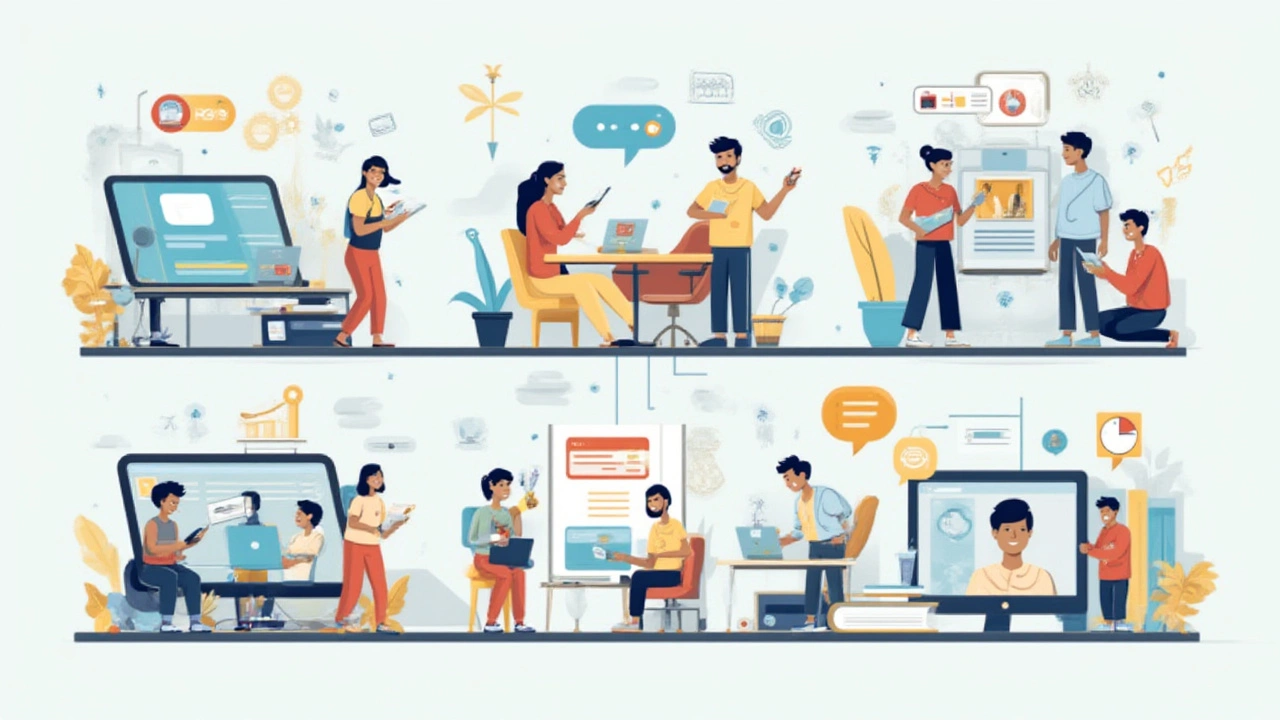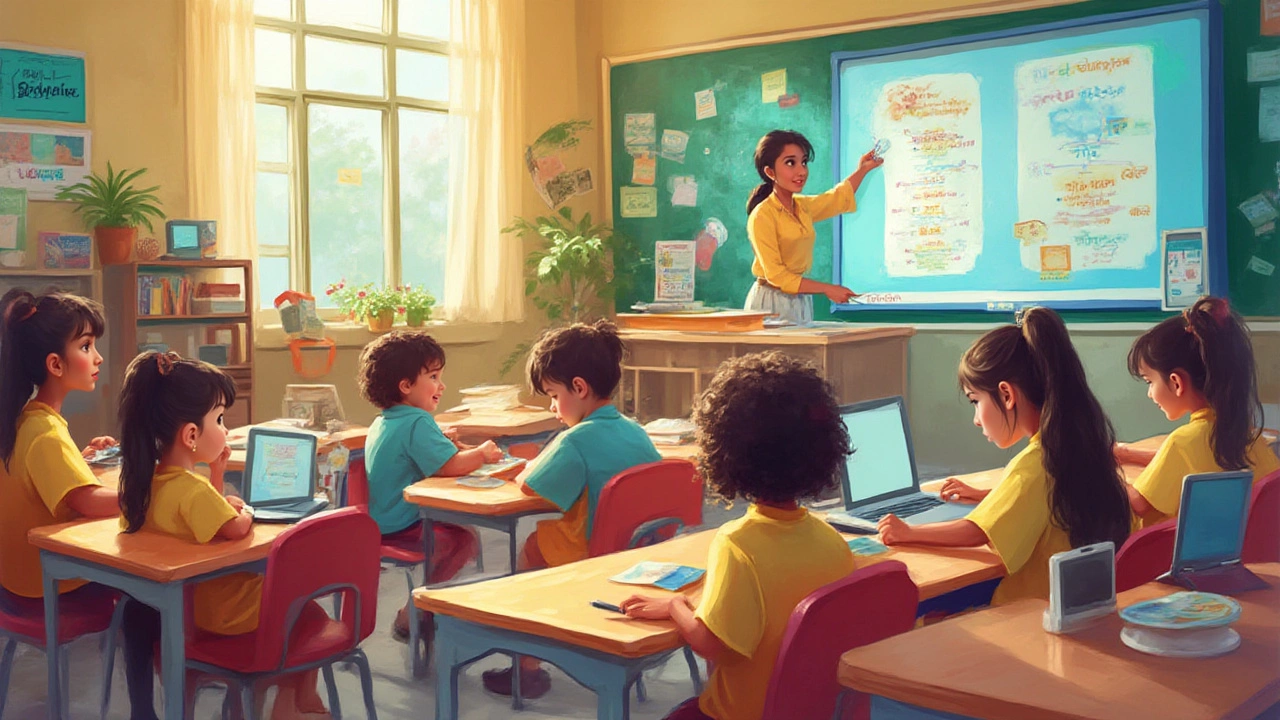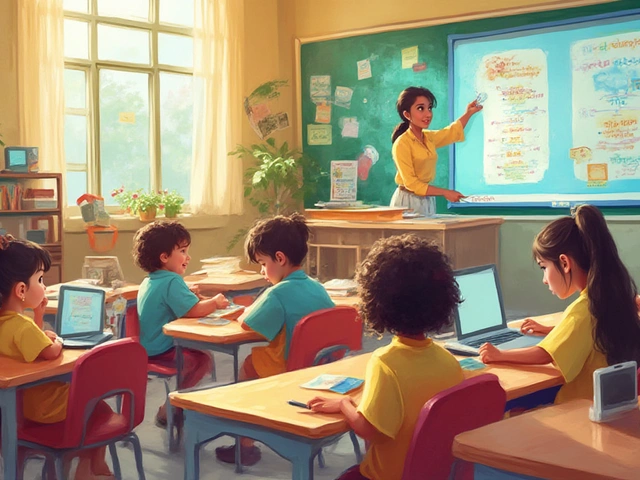Ever wondered why one online course feels fun and another just wears you out? Or why some students swear by recorded lectures while others can’t focus without live sessions? That’s the magic (and mess) of eLearning models. Picking the right way to deliver content can make the difference between learners loving the process or getting lost after lesson two. Here’s the thing: not all eLearning is created equal. Some approaches let you move at your own pace while lounging in bed, others want you talking live on camera as if it’s a high-stakes Zoom call. The secret sauce is matching the model to the right people and purpose. With more students (of all ages) learning with laptops than ever, these models are changing the game in schools, at work, even in weird little skill academies you’ll find on TikTok.
We’ll dig into the five core ways educators use technology to teach, and I’ll share some surprises, practical advice, and the exact pillars you’ll see in a modern digital classroom—whether you’re a parent, student, teacher, or just a curious human. If you think online learning is just “Zoom but with slides,” buckle in. The reality’s much deeper, and getting the fit right can be a lifesaver.
Pure Online Learning (Fully Virtual)
The first model everyone imagines when they hear “eLearning” is the good ol’ pure online setup. No travel, no physical classrooms, no face-to-face anything. Here, every class, quiz, and coffee break happens through screens. The University of Phoenix was one of the early stars, but now, even schools like Harvard and MIT have thrown their courses online for the world to binge. The true freedom this gives is mind-blowing—nearly 60% of global learners report appreciating not being chained to a schedule, according to a 2024 Coursera report. If you need to juggle work, family, or hobbies (shout out to my wife Priya, who finally learned Spanish thanks to this flexibility), this one’s a solid bet.
This model is a double-edged sword, though. No in-person accountability means some students drift off or procrastinate. And let’s not pretend—zoom fatigue is real. A common complaint: “I miss talking to humans!” Without a tight community, some learners find motivation tanks. The fix is clever content and consistent feedback. Some course creators design bite-sized lessons that you can complete in under 15 minutes, just to keep people coming back.
What’s interesting: pure online learning has unlocked new opportunities for people with disabilities, working parents, and folks in remote towns where colleges are hours away. It’s also killed off geography as a barrier. Suddenly, a kid in a small Indian city can learn coding from a Stanford professor or master jazz piano with a tutor in New Orleans. Not all platforms are equal, though. Here’s a quick rundown, in case you’re shopping around:
- Coursera: University-backed, great for credentials
- Udemy: Tons of practical courses, wide variety
- edX: Deep dives, from coding to ethics
- Duolingo: Game-based, brilliant for languages
Pro tip? Look for platforms that mix short video segments with quizzes and community, so you don’t get that isolated, “is anyone out there?” vibe.
Blended Learning: The Hybrid Champion
If pure online feels odd, there’s the best-of-both-worlds option: blended learning. Here, you split your time between online lessons and good old hands-on, in-person activities. Modern schools love this because, honestly, it works. A Stanford 2023 research study found students in blended classes scored 15% higher than those in either traditional or only-online set-ups. Teachers use chat forums for Q&A, and then meet with students in-person to tackle tougher stuff, group projects, or discussions that just flop online.
I’ve seen this work brilliantly in language schools, engineering workshops, and even in rural Indian classrooms where tech infrastructure can be patchy. What makes it shine? You don’t lose the social interaction or real-time feedback. Plus, online tools let kids review at their own pace. Ever watched a student repeat a tricky lecture five times before it “clicks”? That’s blended learning’s superpower.
It’s not all smooth sailing, though. Some schools buy tablets for everyone, then realize half the teachers don’t quite know how to use them. Good blended programs train staff and students in the tech first, then roll out new tools gradually. When that’s done right, you get magic: bored students wake up, introverts join the chat, and teaching gets fun again. Some top tips from veteran educators:
- Start with simple tech first (think Google Classroom, not fancy VR avatars)
- Keep the online parts short and actionable
- Use in-person time for active learning: debates, group builds, or labs
- Let students give feedback on what’s confusing—online or off
The bonus? Blended learning is pandemic-proof. When schools shut down, blended classes already have the online tools and culture to shift fully remote, then swing back in-person when safe. It was a lifesaver for thousands of schools during COVID.
| Model | Flexibility | Community | Typical Tech |
|---|---|---|---|
| Online Only | High | Low | Zoom, LMS |
| Blended | Medium | High | Google Classroom, Forums |
| Flipped | Varies | High | Videos, Quizzes, In-Class Labs |
| Self-paced | Very High | Low | MOOCs, Modules |
| Distance | High | Medium | Mail, Online, TV |

The Flipped Classroom Twist
This one flips everything you expect. Instead of teachers lecturing in class, students learn the basics at home—watching videos, reading, or doing quizzes. In-person time gets spent on solving problems together, asking questions, debating, experimenting, and actual hands-on work. You’ll find this in forward-thinking schools and even some giant universities—Harvard’s intro physics course uses this approach, and their dropout rates dropped by over 40% after making the switch.
Why does this help? Some learners need to hear stuff more than once. Video lessons mean you can pause or repeat until it sticks. Students walk into class ready; at that point, they’re not passive sponges but active problem-solvers. Teachers love it because it frees up class time for real teaching—not just “talking at” a group.
The main trick is making sure students actually do the prep before class. Some schools use short, interactive pre-class quizzes that count toward grades. If learners skip, it shows. Parents sometimes need to nudge reluctant kids into a routine until they see the benefits.
Does flipping work for everyone? Almost. It’s perfect for math, languages, sciences—even music. But if the at-home tech isn’t reliable, or students lack quiet space, the online side can flop. When it’s right, though, this model builds independence, critical thinking, and sharpens teamwork.
- Assignments get tackled in-person, not just at home
- Kids often coach each other—peer learning is huge here
- Students get teachers’ help when things get hard, not just a video
Give it a try with older kids and teens, or in adult ed programs. Watch for a sudden jump in engagement—students like having some control, and it shows.
Self-Paced Model and Distance Education: Flexibility Meets Freedom
This fourth model—arguably the most flexible—gives students full control. Deadlines? Optional. Times of day? Whenever you like. Courses are structured as modules or units that can be picked up or paused based on a person’s own schedule. Think Skillshare, or even Khan Academy, where you might binge-learn Photoshop one week, then drop off for two months when life gets busy.
Working professionals, parents with newborns, and people living in multiple time zones: this is their go-to setup. Here’s a fun fact: LinkedIn’s 2024 Learning Report showed that 80% of adult learners name "flexibility" as their number one reason for picking online courses.
What do you lose? Real-time check-ins and classroom community. Some platforms try to add online chat rooms or mentor Q&A sessions, but it’s not quite the same as a regular study group. If you’re highly motivated or learning for fun, the self-paced model rocks. If you need accountability—maybe stick to more structured models.
Now, classic distance education is an old-timer—think centuries-old universities like the University of London running mail-based courses since the 1850s! Today, it evolved into a more digital, on-demand model. Suddenly, a factory worker in 1920s India went from correspondence courses to, today, a software engineer streaming AI classes from MIT. Social media has even pushed chat-based “micro-courses”—learning in 5-minute daily chats.
The difference between pure self-paced and classical distance ed? The latter often includes periodic check-ins—by phone, mail, or online. The idea is to keep that thread of connection alive, so learners don’t feel totally alone. It can also include TV, radio, or even WhatsApp groups. In India, distance education surged during COVID, making it the top method in rural areas.
- Perfect for learners with unusual schedules or global time zones
- Best for highly self-motivated folks
- Often cheaper than live or in-person courses
- Gives access to rare courses not available locally
My tip, after watching Priya hack through a stack of online diplomas: build a plan. Set milestones, use reminders, maybe even buddy up with a friend. The freedom is amazing, but only if you can keep powering through when life gets noisy. If you find yourself losing steam, drop into a learning community or forum for some encouragement.
Whatever your flavor—blended, flipped, pure online, self-paced, or classic distance—it’s about matching the eLearning models to how you learn best. And these days, there’s a good chance your next teacher is just a click away, coffee and pajamas optional.



